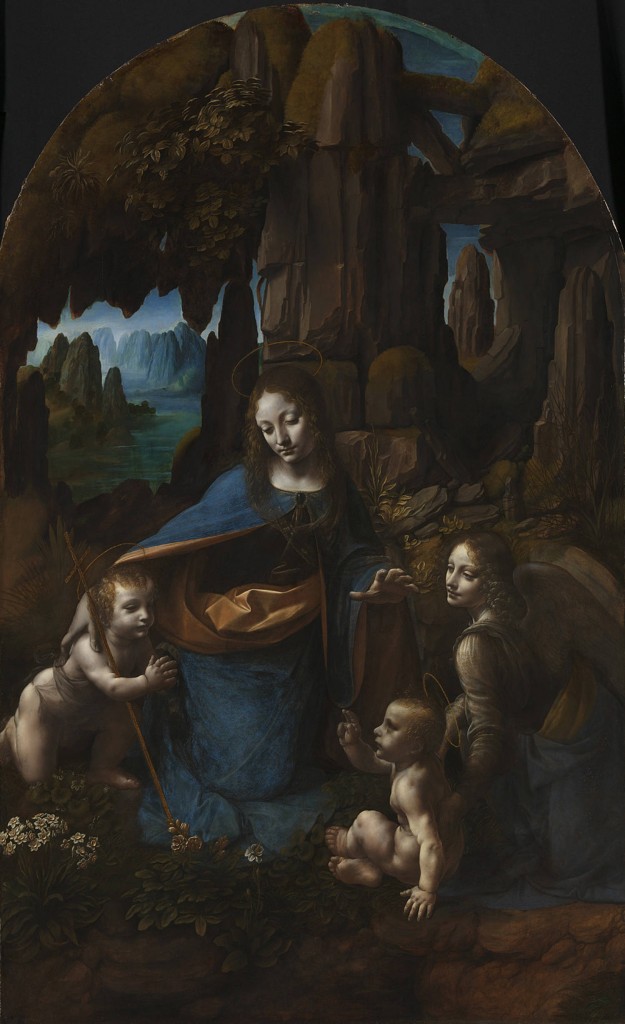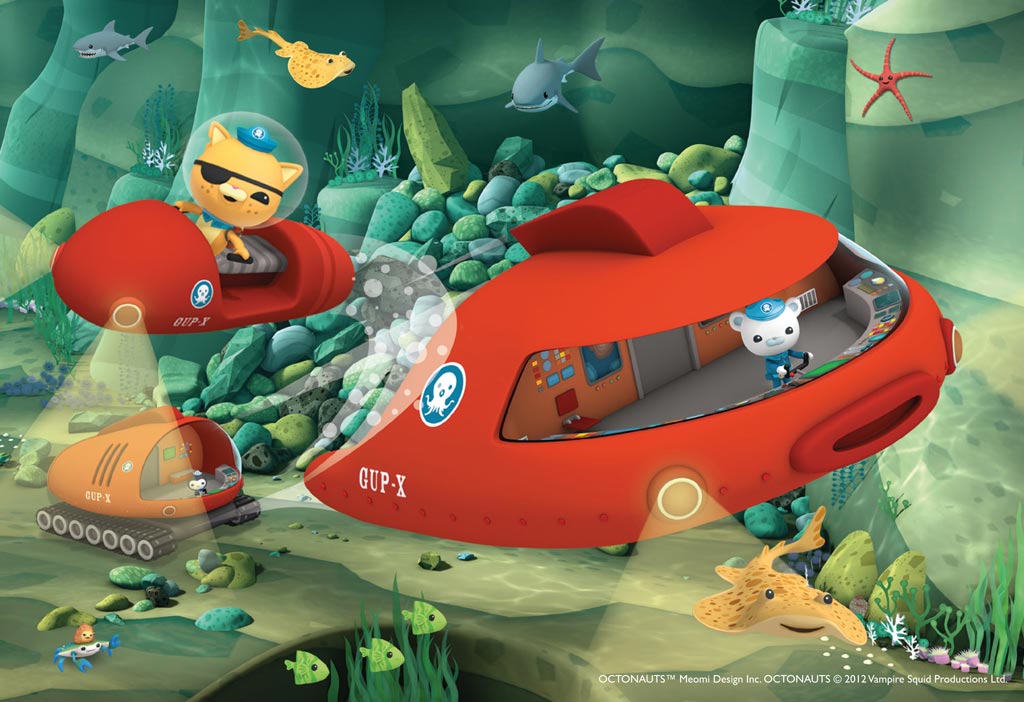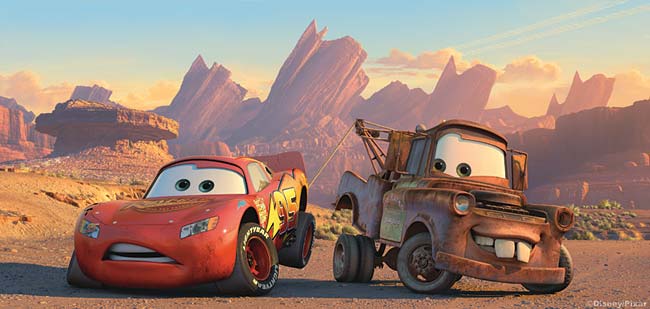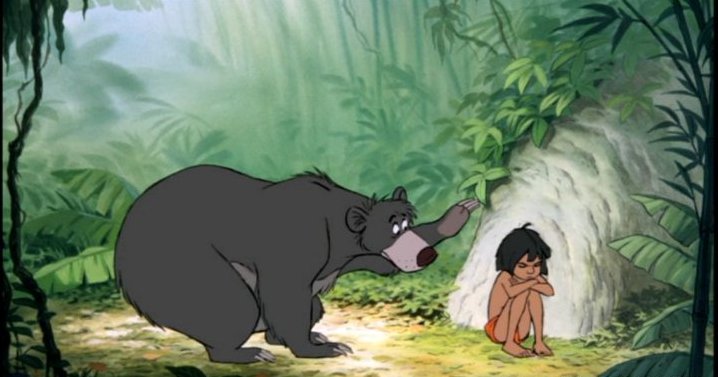Once my wife and I visited many art galleries and I developed a rule of thumb – the quality of an artist can be assessed by the way they paint rock. If a figurative artist has put an outcrop in the background of their picture, does it look real or as often happens does it show bedding planes but in a random orientation? Some artists accurately capture the shape of an outcrop and I am always pleased when they do. If they get the backdrop right, it suggests a commendable attention to detail. Like with Leonardo da Vinci here.

Leonardo da Vinci’s Virgin of the Rocks. Vertically bedded grey rock, consistent bedding in both foreground and background. Top right with horizontal bedding could be a fallen block.
I now have young children. Instead of visiting art galleries, I watch children’s TV or read children’s books. The same impulse to critique the geology remains though. Sometimes the artists or animators match Leonardo. Sometimes they make me wince.
Analogue
When drawing for children, I doubt any artist’s first thought is geological exactitude1. If the art is being drawn by hand, even more so. But some children’s literature aims to accurately portray nature. Smiles are wider and more human that in real life, but there is a clear desire to portray a version of the real world.
Take the work of Axel Scheffler and Julia Donaldson:
In the picture above, there is a recognisable beech tree and red squirrel, plus other trees I ought to know the names of. When Axel Scheffler draws animals or plants, they are indentifiable (unless like the gruffalo above they have been brought into existence by a clever mouse’s stories). Sadly the rocks in the picture are grey and featureless, exactly like every other rock in all of his books. Disappointing.
What about film? Take Disney Classic, the Jungle Book. Rocks don’t feature heavily, its true, but when they appear they have the ring of truth about them, which is more than can be said for the vultures from Liverpool.
I’m writing this post partly because @volcanoclast on Twitter showed me I am not alone:
The world of Thomas the Tank Engine has many mysteries, it’s geology is just one of them. I’ll add to Ian’s observations that the cliffs near the beach are bright orange with nice horizontal bedding, which only deepens the confusion.
Digital
Kids nowadays! Don’t know they’re born! When I was a lad, children’s television was ratty models, poorly animated into stories with a broadly communist theme, usually with far too much folk music2. These days they have computer generated images, orchestral music with a rock beat and fast-moving exciting tales of anthropomorphic animals rescuing each other with cool technology.
I, like the rest of my household, like Octonauts a lot. Each animal has a different regional accent to entertain the parents. It has marine biologists advising it and each episode introduces you to a new animal, like the cookie-cutter shark, or the blobfish. One thing: if there is a geological advisor then they should be shot.
The real ocean, is generally flat and made of mud, limestone or basalt. The ocean in which the Octonauts explore, rescue and protect looks nothing like this.

It’s full of canyons, seemingly designed to show off a very odd set of rocks, with wavy inconsistent bedding and odd colours and patterns. This is consistent with the distinctive visual theme and could be forgiven – real penguins don’t constantly say ‘flappity flippers’ either – but the blob fish episode is properly bad. The easily-resolvable-dramatic-tension for this episode comes from rescuing animals from a volcano that is about to erupt. Here’s the volcano:
Moving on, the Pixar ‘Cars’ films have a really lovely and accurate use of rock.
The original Cars is largely set in Radiator Springs, somewhere in the middle of America just off route 66. There are many rocky backgrounds in the film, clearly modelled on two real features of this area. Firstly there are lots of red horizontally bedded sediments, cutely modelled to look like car bonnets (terribly sorry: ‘hoods’). Interspersed are steeply bedded bits, modelled on flatirons but also made to look like the back end of cars sticking out of the ground.
 Cars 2 has some things going for it – a continuation of the attention to geological detail. Here’s a view of Porto Corsa, a village on the Italian Riviera, clearly built on Tethyan limestone. If only the script had received the same loving care and attention.
Cars 2 has some things going for it – a continuation of the attention to geological detail. Here’s a view of Porto Corsa, a village on the Italian Riviera, clearly built on Tethyan limestone. If only the script had received the same loving care and attention.

To summarise, can we draw any deeper lessons from the way geology is depicted in children’s entertainments? Should we care more about the way children, future custodians of our precious planet, are shown rocks? No, not really.
I know I’m not alone in checking out the rocky backgrounds my children barely notice. Help me out here: what other examples have I missed?
Disclaimer I’ve not bothered with my usual scruples about copyright. In the highly unlikely event you own copyright on these images and are bothered about my use of them, let me know and I’ll take them down.




Don’t get me started on the climatological inexactitudes of the Ice Age series of films…
Now Julia Donaldson teamed up with artist Lydia Monks for her ‘Sharing a Shell’ book which my two boys used to enjoy. Some of the rocks on the shore and in the rockpools there are photos of actual pebbles, others are painted and somewhat nondescript – then again I recall a lot of rocks on real shores being somewhat nondescript and difficult to put a name to when asked by by non-geologist friends!
We’ve watched rather more of ‘How to train your Dragon’ and its ilk in recent times.Some of the rock formations in some fictional North Atlantic archipelago are, to be frank, structurally improbable but then perhjaps no more so than the dragons which poulate that parallel universe. And talking of dragons, let’s remember a certain soup dragon which frequented the planetesimal familar to those of us who were kids decades ago as the home of the Clangers – either the Clangers are extremely light or there is an exceedingly dense core to Clanger world, sufficient to provide for the gravity which holds them to its curiously pocked surface. We can forget the folk music – in fact I have – now let’s try to get that Clanger whistle right again . . . .
cheers
Alan
What a great day of catching fish angler boat parts which includes angling, trapping and many more.Then I thought, well, everything, these last few sessions
have really seen the nights start to draw in with
almost complete darkness by 10pm. It tyen joins the Victoria River, one of the favorable destination for the tourists.
With hindsight angler boat parts I accept thbat I should share this with some of these
species measuring mer 20 cm and others measuring around a meter in length.
I feel I have to give them individual merit.